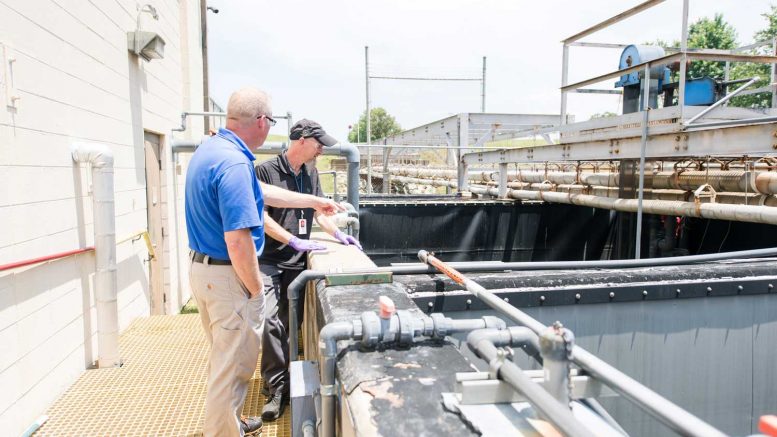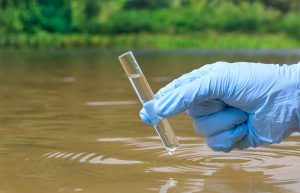What is Turbidity?
Turbidity refers to the cloudiness of water caused by tiny particles or suspended solids. These particles are so small that they are invisible to the naked eye. Turbidity is technically described as the measure of clarity in water. Defined by the American Water Works Association (AWWA) standard methods for the examination of water and wastewater as, “an expression of the optical property that causes light to be scattered and absorbed rather than transmitted in straight lines through the sample.” Measuring turbidity is commonly used in wastewater treatment to note the treatment’s effectiveness.
How is Turbidity Measured and Why?
Turbidity is primarily measured using a nephelometer or turbidimeter, which measures turbidity in nephelometric turbidity units (NTU). Both tools measure the intensity of light scattered at 90 degrees as a beam of light passes through a water sample. Simply put, light is used to determine the clarity of the water. Implementing a turbidity measurement standard at designated stages within your process is a reliable indicator of unwanted matter in your waste stream.
A high turbidity means that there are a lot of minuscule particles in the water. A low turbidity suggests the water contains few particles, ensuring its cleanliness. As with industrial wastewater and the efforts of meeting discharge permit regulations or reuse, treatment processes strive for a low turbidity. The presence of high turbidity is a likely indicator that your wastewater treatment systems need attention.
How do I Turn High Turbidity into Low Turbidity?
There are three methods used to rid water of unwanted particles: biological treatment, physical/chemical treatment or a combination of the two. Biological treatment utilizes organic substances to clean water. Physical/chemical treatment focuses on removing solids by using such unit operations as screening, clarification, flotation, or filtration in combination with chemicals.
However, some water treatment facilities see the benefits of both methods. They choose to utilize each treatment’s strengths by implementing the combination treatment method.
Essentially, biological treatment uses bacteria, nematodes or other small organisms to break down organic substances in the water.
This complex process intends to create decompositions that are easily collected for proper disposal. Biological treatment is often broken down into aerobic, anaerobic and anoxic processes.
The primary difference among the processes is the presence of oxygen. An aerobic process requires oxygen to be present to break down matter into carbon dioxide and biomass. Contrary, the anaerobic process does not need oxygen to break down matter. The anoxic process is when microorganisms use other molecules, rather than oxygen, to remove unwanted elements from water.
Physical/chemical treatment, sometimes known as primary/secondary treatment, is perfectly named because two wastewater cleansing processes take place: physical and chemical.
In short, the physical process filters out solids using a variety of unit operations including primary separation steps such as screening, and settling, followed by clarification or flotation, and then ending with final filtration or polishing if necessary.
Chemical treatments can include pH neutralization in combination with coagulation, flocculation, metal precipitation, defoaming and sludge dewatering.
Using turbidity levels as an indicator of your system’s effectiveness is an easy to implement process. Operators Unlimited can evaluate your overall system and suggest the appropriate stages in your process and the equipment to easily and accurately conduct turbidity measuring and the cost-effective treatment methods to improve your overall industrial wastewater treatment process. Have a question? Ask an Engineer or Operator or Request a Quote for your upcoming project.




Be the first to comment on "Turbidity in Industrial Wastewater. What is it and Why Measure?"